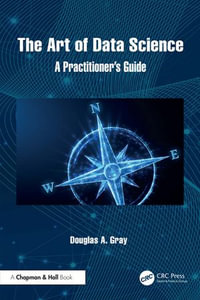
eTEXT
Getting Started with Haskell Data Analysis
Put your data analysis techniques to work and generate publication-ready visualizations
By: James Church
eText | 2 November 2018 | Edition Number 1
At a Glance
eText
$30.79
OR
Free with Kobo Plus Read
Start Free Trial *- Subscribe and read all you want.
- $13.99 a month after free trial. Cancel Anytime. Learn more.
Instant online reading in your Booktopia eTextbook Library *
Read online on
Not downloadable to your eReader or an app
Why choose an eTextbook?
Instant Access *
Purchase and read your book immediately
Read Aloud
Listen and follow along as Bookshelf reads to you
Study Tools
Built-in study tools like highlights and more
* eTextbooks are not downloadable to your eReader or an app and can be accessed via web browsers only. You must be connected to the internet and have no technical issues with your device or browser that could prevent the eTextbook from operating.
Put your Haskell skills to work and generate publication-ready visualizations in no time at all
Key Features
- Take your data analysis skills to the next level using the power of Haskell
- Understand regression analysis, perform multivariate regression, and untangle different cluster varieties
- Create publication-ready visualizations of data
Book Description
Every business and organization that collects data is capable of tapping into its own data to gain insights how to improve. Haskell is a purely functional and lazy programming language, well-suited to handling large data analysis problems. This book will take you through the more difficult problems of data analysis in a hands-on manner.
This book will help you get up-to-speed with the basics of data analysis and approaches in the Haskell language. You'll learn about statistical computing, file formats (CSV and SQLite3), descriptive statistics, charts, and progress to more advanced concepts such as understanding the importance of normal distribution. While mathematics is a big part of data analysis, we've tried to keep this course simple and approachable so that you can apply what you learn to the real world.
By the end of this book, you will have a thorough understanding of data analysis, and the different ways of analyzing data. You will have a mastery of all the tools and techniques in Haskell for effective data analysis.
What you will learn
- Learn to parse a CSV file and read data into the Haskell environment
- Create Haskell functions for common descriptive statistics functions
- Create an SQLite3 database using an existing CSV file
- Learn the versatility of SELECT queries for slicing data into smaller chunks
- Apply regular expressions in large-scale datasets using both CSV and SQLite3 files
- Create a Kernel Density Estimator visualization using normal distribution
Who this book is for
This book is intended for people who wish to expand their knowledge of statistics and data analysis via real-world examples. A basic understanding of the Haskell language is expected. If you are feeling brave, you can jump right into the functional programming style.
Read online on
ISBN: 9781789808605
ISBN-10: 178980860X
Published: 2nd November 2018
Format: ePUB
Language: English
Publisher: Packt Publishing
Edition Number: 1
You Can Find This eBook In
This product is categorised by
- Non-FictionComputing & I.T.Graphical & Digital Media Applications3D Graphics & Modelling
- Non-FictionComputing & I.T.DatabasesDatabase Design & Theory
- Non-FictionComputing & I.T.DatabasesData Capture & Analysis
- Non-FictionComputing & I.T.DatabasesData Mining
- Non-FictionComputing & I.T.Computer ScienceHuman-Computer InteractionInformation Architecture
- Non-FictionComputing & I.T.Computer ScienceComputer Architecture & Logic Design























